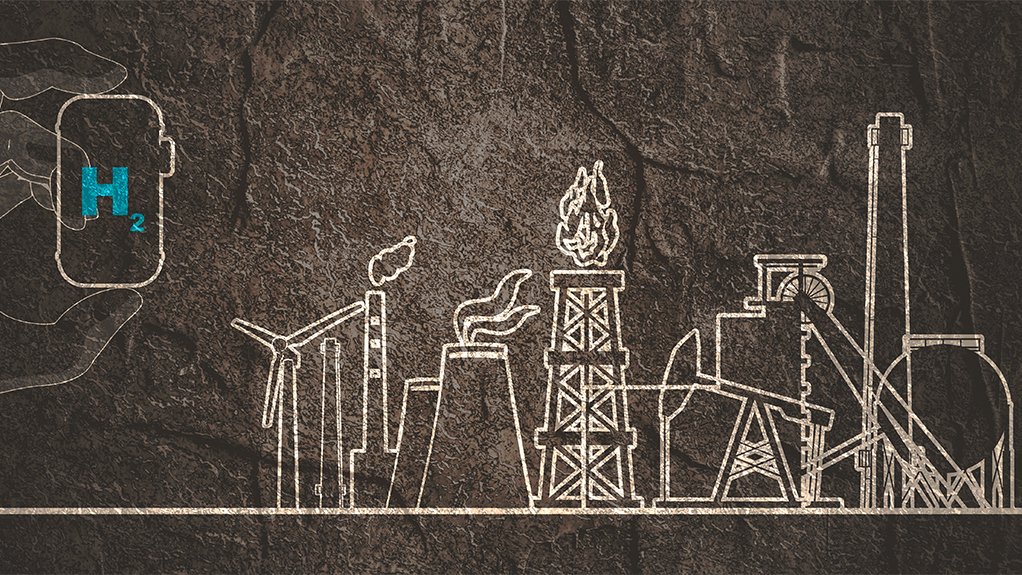PGMs demand to be underpinned by need for green power-to-X
The reduction in demand for platinum group metals (PGMs) owing to the phasing out of internal combustion engines (ICEs), in response to the need to reduce global greenhouse-gas emissions, should be offset by the increased demand for PGMs in many other commercial and industrial applications.
Fuel cells, which use PGMs in their catalysts, still represent significant demand for PGMs and there is some commercial traction, particularly in heavy-duty and other hard-to-decarbonise applications, including marine, rail and aviation transport, said industrial business multinational Mitsubishi Corporation business development head Dr Jonathan Butler.
This is expected to be one of the platinum demand drivers over the next ten years, he said in a presentation delivered during the Hydrogen Industry Day on July 19.
Further, green hydrogen production from water electrolysis, using proton-exchange membrane (PEM) technologies, requires platinum for catalysis, while other hydrogen generation technologies also use platinum and iridium for catalysis.
The chlor-alkali process to produce hydrogen uses PGMs to improve the durability of the electrodes.
Additionally, steam-methane reformation, which South Africa has expertise in, is used to produce blue hydrogen using carbon capture and storage (CCS). However, not all blue hydrogen production uses PGMs.
This presents an opportunity for green hydrogen to be deployed with CCS systems, as combining carbon dioxide with green hydrogen can produce chemical building blocks for the petrochemicals value chain, he said.
Further, green ammonia not only serves as an industrial feedstock or to produce fertilisers, but is also used to store and distribute hydrogen, especially in applications where gaseous hydrogen is not permitted, such as in aviation and marine transportation. PGMs also have a role to play in these applications, Bulter added.
Fuel cells use about three times as much platinum as catalytic converters in ICEs, said platinum mining company Anglo American Platinum market development principal Fahmida Smith.
Based on the US Department of Energy expected platinum loading of 0.125 g/kW, a fuel cell electric vehicle (FCEV) penetration rate of 10% would represent about five-million to six-million ounces of incremental demand a year for platinum in the US, she said.
Battery electric vehicles are suitable for light passenger transportation, but FCEVs are suitable for fleet, logistics and heavy-duty applications because they can be refueled and do not require charging and batteries do not take up as much weight, she noted.
"Further, some electrolyser technologies use PGMs, while others do not. As a platinum producer, we encourage the use of PGMs and are working to develop the market. There are also opportunities in the alkali sector and our team in China is collaborating with industrial partners to include platinum in the nickel anode of alkali technologies," she said.
Hard-to-abate sectors represent exciting demand for PGMs. For example, the aviation sector is responsible for about 2.4% of global greenhouse gas (GHG) emissions and is looking to resolve this through the use of sustainable aviation fuels to meet 2030 targets, said platinum miner Impala Platinum new commodities executive Seten Naidoo.
"Hydrogen technologies, at the moment, are lighter to carry and more energy efficient than conventional jet fuel and many aviation companies, including aircraft manufacturers and airlines, are testing hydrogen planes," he highlighted.
One company has ordered 3 000 fuel cell engines and the platinum mining industry can expect demand of about 200 000 oz/y of platinum from the aviation sector by 2030, he added.
Meanwhile, aside from energy and decarbonisation, PGMs can also play a role in other areas, such as water purification. Hydrogen peroxide is used in water treatment for bleaching and as a biocide. It is currently produced from fossil fuels, which also reduces the viability of its use in water treatment in remote areas, said Naidoo.
However, there has been an emergence of portable hydrogen peroxide generation plants that use PGMs in their catalysts and, therefore, this could see application in water treatment, agriculture and mining, he noted.
Further, the clothing and textiles industry contributes almost 10% of global GHG emissions. The emergence and growth of CCS in other industries can serve to provide the carbon dioxide that can be reacted with a solvent using a PGM catalyst to provide the chemical foundation for polyester.
"PGMs have the ability to play a significant role in the world's decarbonisation journey," said Naidoo.
Globally, about one-million tons a year of green hydrogen is produced, of which about one-third is produced by PEM electrolysers. To meet net-zero targets, the world needs to produce 75-million tons a year of green hydrogen, said Butler.
"There are about 25-million tons a year of green hydrogen production projects being built, which is about one-third of the capacity required by 2030.
"Policy instruments, such as the US Inflation Reduction Act, are also supporting more projects being added to ramp up production to contribute to meeting net-zero goals. About one-third of green hydrogen can be expected to be produced by PEM electrolysers, which PGMs underpin."
Mitsubishi's PGMs executive team is expecting some significant demand drivers to come in after 2030 from green hydrogen, he added.
"The world will need a lot more platinum and iridium, and we can expect demand for iridium in hydrogen applications of 200 000 oz a year by 2030. The iridium market is tiny. In a 300 000 oz/y market, this represents two-thirds of demand only from hydrogen applications by 2030. And there are still many other applications that use iridium."
Palladium and rhodium supply do not currently stand to benefit from hydrogen markets, but ruthenium has a place in hydrogen storage, and for cell reversal in fuel cells, and stands to benefit from this midstream storage and distribution segment of the market.
To ensure security of metals supply, such as iridium, the mining industry can ringfence some supply for the hydrogen industry. Additionally, the ICE market will be smaller in the future and more iridium will be available because there will be less used to make spark plugs, Bulter added.
Further, the industry needs to allay concerns over security of supply by improving its ability to sell in smaller lots and to remove premiums in market partnership agreements for long-term hydrogen production, suggested Naidoo.
Floor and ceiling pricing can also be introduced to support security of pricing and supply, such as was done to develop the rhodium market.
The US Inflation Reduction Act also provides a floor price of $3/kg of green hydrogen, if it is produced with less than 500 g of carbon dioxide per 1 kg of hydrogen, he added.
Innovation to drive the most efficient use of the metals in the production of equipment and establishing recycling circuits for critical metals will support supply security and growth of the industry, Naidoo said.
Comments
Press Office
Announcements
What's On
Subscribe to improve your user experience...
Option 1 (equivalent of R125 a month):
Receive a weekly copy of Creamer Media's Engineering News & Mining Weekly magazine
(print copy for those in South Africa and e-magazine for those outside of South Africa)
Receive daily email newsletters
Access to full search results
Access archive of magazine back copies
Access to Projects in Progress
Access to ONE Research Report of your choice in PDF format
Option 2 (equivalent of R375 a month):
All benefits from Option 1
PLUS
Access to Creamer Media's Research Channel Africa for ALL Research Reports, in PDF format, on various industrial and mining sectors
including Electricity; Water; Energy Transition; Hydrogen; Roads, Rail and Ports; Coal; Gold; Platinum; Battery Metals; etc.
Already a subscriber?
Forgotten your password?
Receive weekly copy of Creamer Media's Engineering News & Mining Weekly magazine (print copy for those in South Africa and e-magazine for those outside of South Africa)
➕
Recieve daily email newsletters
➕
Access to full search results
➕
Access archive of magazine back copies
➕
Access to Projects in Progress
➕
Access to ONE Research Report of your choice in PDF format
RESEARCH CHANNEL AFRICA
R4500 (equivalent of R375 a month)
SUBSCRIBEAll benefits from Option 1
➕
Access to Creamer Media's Research Channel Africa for ALL Research Reports on various industrial and mining sectors, in PDF format, including on:
Electricity
➕
Water
➕
Energy Transition
➕
Hydrogen
➕
Roads, Rail and Ports
➕
Coal
➕
Gold
➕
Platinum
➕
Battery Metals
➕
etc.
Receive all benefits from Option 1 or Option 2 delivered to numerous people at your company
➕
Multiple User names and Passwords for simultaneous log-ins
➕
Intranet integration access to all in your organisation




















